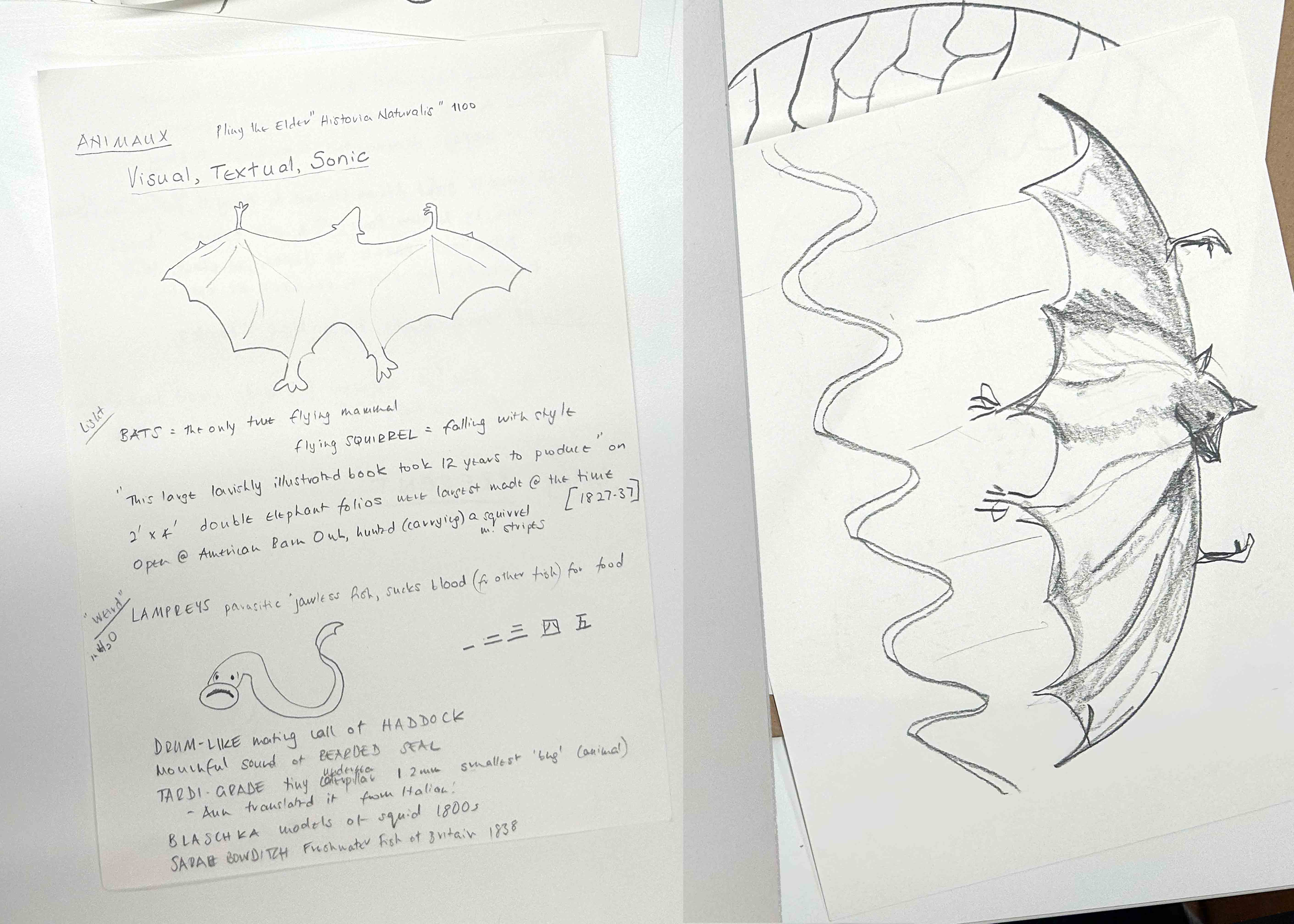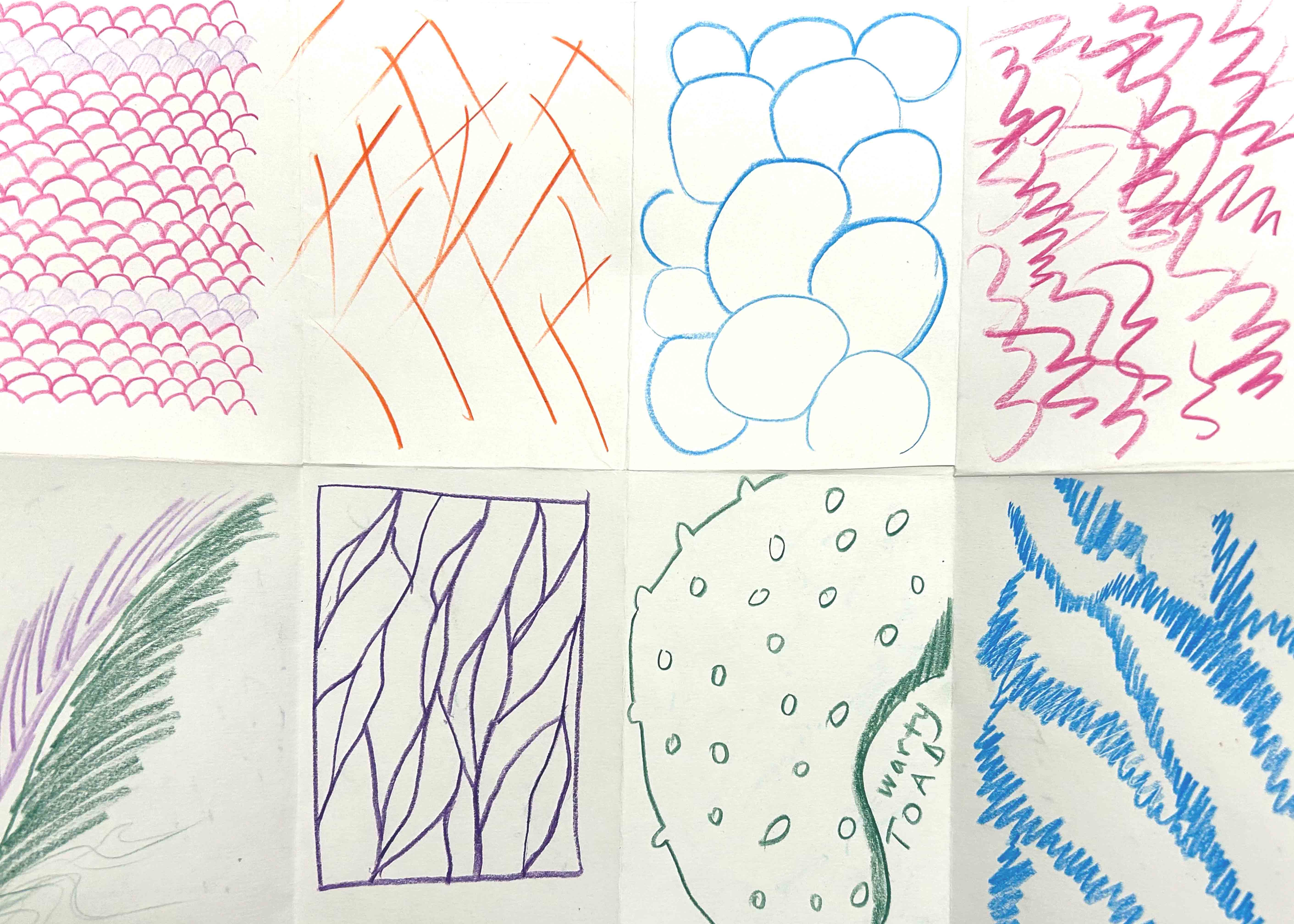Make Sense
British Library
Animals

Following our successful Make Sense programme exploring the general archive of the British Library, we were invited to collaborate again on a new programme in response to their exhibition, Animals: Art, Science and Sound.


Animals is the first major exhibition exploring how animals have been documented over time, featuring writings, drawings, and sound recordings. This engagement allowed us to take a group of participants living with dementia on a free tour of the exhibition during relaxed hours. Together, we engaged in a documentation process, recording our fascinating findings through drawing and note-taking. The ability to move between the exhibition and our workshop space for breaks and refreshments helped ease the intensity of the viewing experience.

In Week 2, we created small sketchbooks by folding and cutting paper in a way that allowed us to reopen them at the end. One by one, we listened to a range of animal sounds from the library's vast sound archive, including some specifically selected for the exhibition, like the song of the last living Kaua’i ‘o ‘o. As each sound played, participants responded by making marks on a page in their sketchbook. At the end of the process, we all opened our sketchbooks to reveal our multi-coloured extravaganzas.

Despite taking place in a windowless underground room, Gyotaku (fish printing) was a huge success, and the results were very satisfying. After sourcing a variety of fish from a local market, we applied a mix of two colours directly onto their scales, including a black ink dot for the eye. We then printed them onto rice paper, which, though delicate, is strong and captures the subtleties of the fish's texture. This printing method has strong ties to the exhibition's theme of animal documentation, as Gyotaku was originally used by Japanese fishermen to record the size and type of their catch.

In Week 4, we used quick-drying clay to explore different animal textures, like the fur, scales, and skin that participants had observed in the exhibition. We considered the best methods for recreating these textures through mark-making and encouraged participants to use their bare hands and tools to heighten the sensory aspect of the process.
In Week 5, we focused on Levon Biss's beetle images featured in the exhibition. Using printed macro images as guides, participants cut negatives out of black paper and layered them over marbled paper they created to mimic the beetles' iridescent skin. Each marbled print is unique, much like the beetles themselves. We learned that despite genetic similarities that contribute to their colourful appearance, beetles of the same type are actually quite distinct due to emotional and environmental factors.

In many ways, the final week offered the least prescriptive workshop. Using Darwin's discovery of the platypus as our inspiration, we engaged in a drawing exercise based on the Surrealist game "Exquisite Corpse." Darwin's drawings of the platypus, documented during his trip to Australia, were initially met with disbelief due to the creature's unusual combination of features. Participants were assigned either a head, torso, or bottom to draw in private on a shared piece of paper. The unveiling revealed a collectively imagined animal, created without knowledge of the other parts. The result was an amusing amalgamation of elements that either surprisingly worked or completely clashed!
